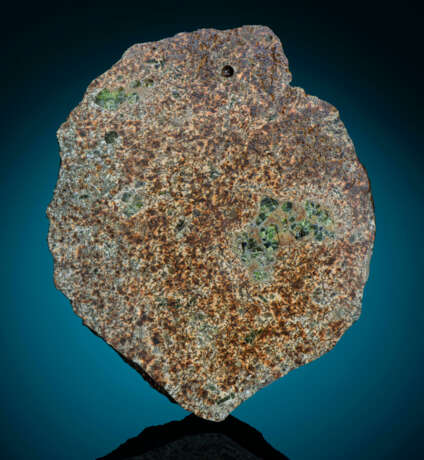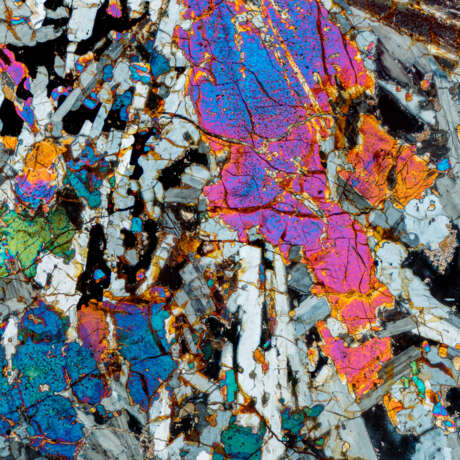ERG CHECH 002 — OLDEST VOLCANIC ROCK IN THE SOLAR SYSTEM, INTERIOR & EXTERIOR REVEALED
23.02.2022 00:00UTC +00:00
Classic
Verkauft
27720USD $ 27 720
| Auctioneer | CHRISTIE'S |
|---|---|
| Veranstaltungsort | Vereinigtes Königreich, London |
| Aufgeld | see on Website% |
Archiv
Die Auktion ist abgeschlossen. Es können keine Gebote mehr abgegeben werden.

ID 716444
Los 59 | ERG CHECH 002 — OLDEST VOLCANIC ROCK IN THE SOLAR SYSTEM, INTERIOR & EXTERIOR REVEALED
Schätzwert
$ 60 000 – 90 000
Less than one year later came the headline news. On March 16, 2021, a research paper published in the Proceedings of the National Academy of Sciences concerning Erg Chech 002 was deemed sufficiently noteworthy that it was shared by hundreds of newspapers throughout the world. Following a result of isotopic analysis, a team of international researchers led by Dr. Jean Alix Barrat determined that Erg Chech 002 meteorites are the oldest volcanic rocks in the solar system — roughly 20 million years older than Earth.
Erg Chech 002 is a volcanic rock from the crust of a protoplanet (an asteroid with an iron core, mantle, crust — and volcanoes) that no longer exists. Surface samples of the oldest protoplanets are virtually unheard of because their parent bodies were typically metamorphosed or destroyed by impacts. The appearance of large pyroxene crystals indicates the magma from which this stone originated must have cooled quite slowly. This pyroxene differs in composition from the pyroxene found on Earth, or that found in other meteorites, because of the relatively high amount of chromium — the same element responsible for emeralds being green. Moreover, the oxygen isotopes of Erg Chech 002 occupy a special niche shared by only four other meteorites, but Erg Chech 002 is mineralogically unlike the other four.
Erg Chech 002 is a remarkable meteorite, and this particular specimen has an exceptional earthly provenance as well. It is among the larger specimens and images of this very meteorite were used when the National Academy of Sciences announced its findings. As a result, the article published by scores of newspapers as well as websites throughout the world — including LiveScience, Vice, Forbes and National Geographic — featured an image of the very specimen now offered.
The cut and polished face of this specimen features a variegated warm-hued matrix with large green pyroxene crystals scattered throughout. A prominent vug is seen at the upper perimeter. The soft, undulating curves of the reverse outer surface are also embellished with the same, large emerald-hued crystals. This is a notable offering of a preeminent specimen of the oldest known lava in the solar system.
Christie's would like to thank Dr. Alan E. Rubin at the Department of Earth, Planetary, and Space Sciences, University of California, Los Angeles for his assistance in preparing this catalogue.
159 x 133 x 21mm (6.25 x 5.25 x 0.75 in.) and 605.4g (1.33 lbs)
| Adresse der Versteigerung |
CHRISTIE'S 8 King Street, St. James's SW1Y 6QT London Vereinigtes Königreich | |
|---|---|---|
| Vorschau |
| |
| Telefon | +44 (0)20 7839 9060 | |
| Aufgeld | see on Website | |
| Nutzungsbedingungen | Nutzungsbedingungen |




